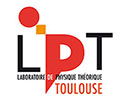Loading...
Derniers dépôts, tout type de documents
We analyze the Google matrix of directed networks of Wikipedia articles related to eight recent Wikipedia language editions representing different cultures (English, Arabic, German, Spanish, French, Italian, Russian, Chinese). Using the reduced Google matrix algorithm, we determine relations and interactions of 23 society concepts and 17 religions represented by their respective articles for each of the eight editions. The effective Markov transitions are found to be more intense inside the two blocks of society concepts and religions while transitions between the blocks are significantly reduced. We establish five poles of influence for society concepts (Law, Society, Communism, Liberalism, Capitalism) as well as five poles for religions (Christianity, Islam, Buddhism, Hinduism, Chinese folk religion) and determine how they affect other entries. We compute inter-edition correlations for different key quantities providing a quantitative analysis of the differences or the proximity of views of the eight cultures with respect to the selected society concepts and religions.
Quantum cloning is a fundamental protocol of quantum information theory. Perfect universal quantum cloning is prohibited by the laws of quantum mechanics, only imperfect copies being reachable. Symmetric quantum cloning is concerned with case when the quality of the clones is identical. In this work, we study the general case of $1 \to N$ asymmetric cloning, where one asks for arbitrary qualities of the clones. We characterize, for all Hilbert space dimensions and number of clones, the set of all possible clone qualities. This set is realized as the nonnegative part of the unit ball of a newly introduced norm, which we call the $\mathcal{Q}$-norm. We also provide a closed form expression for the quantum cloner achieving a given clone quality vector. Our analysis relies on the Schur-Weyl duality and on the study of the spectral properties of partially transposed permutation operators.
In the quest for robust and universal quantum devices, the notion of simulation plays a crucial role, both from a theoretical and from an applied perspective. In this work, we go beyond the simulation of quantum channels and quantum measurements, studying what it means to simulate a collection of measurements, which we call a multimeter. To this end, we first explicitly characterize the completely positive transformations between multimeters. However, not all of these transformations correspond to valid simulations, as evidenced by the existence of maps that always prepare the same multimeter regardless of the input, which we call trash-and-prepare. We give a new definition of multimeter simulations as transformations that are triviality-preserving, i.e., when given a multimeter consisting of trivial measurements they can only produce another trivial multimeter. In the absence of a quantum ancilla, we then characterize the transformations that are triviality-preserving and the transformations that are trash-and-prepare. Finally, we use these characterizations to compare our new definition of multimeter simulation to three existing ones: classical simulations, compression of multimeters, and compatibility-preserving simulations.
We introduce the Ising Network Opinion Formation (INOF) model and apply it for the analysis of networks of 6 Wikipedia language editions. In the model, Ising spins are placed at network nodes/articles and the steady-state opinion polarization of spins is determined from the Monte Carlo iterations in which a given spin orientation is determined by in-going links from other spins. The main consideration is done for opinion confrontation between {\it capitalism, imperialism} (blue opinion) and {\it socialism, communism} (red opinion). These nodes have fixed spin/opinion orientation while other nodes achieve their steady-state opinions in the process of Monte Carlo iterations. We find that the global network opinion favors {\it socialism, communism} for all 6 editions. The model also determines the opinion preferences for world countries and political leaders, showing good agreement with heuristic expectations. We also present results for opinion competition between {\it Christianity} and {\it Islam}, and USA Democratic and Republican parties. We argue that the INOF approach can find numerous applications for directed complex networks.
Sujets
Google matrix
Critical phenomena
Matrix model
Adaptive transform
Quantum denoising
Hilbert space
Chaotic dynamics
Wikipedia network
2DRank algorithm
Semiclassical
Clonage
Chaos quantique
Adaptative denoiser
Community structure
Many-body problem
Quantum Physics quant-ph
Adaptive filters
2DEAG
Dynamical chaos
ANDREAS BLUHM
Random graphs
Qubit
Quantum information
Calcul quantique
2DEG
Quantum image processing
Asymmetry
Harper model
Nonlinearity
Wikipedia
Spin
Amplification
Opinion formation
Mécanique quantique
Semi-classique
Solar System
Wikipedia networks
Atom laser
Correlation
Entropy
Numerical calculations
Plug-and-Play
Ordinateur quantique
Random
Chaotic systems
0375-b
World trade network
Structure
Quantum denoiser
World trade
Interférence
Deep learning
Duality
Anderson localization
Wigner crystal
6470qj
Adaptive signal and image representation
Adaptive transformation
Covariance
Information quantique
Social networks
PageRank
Localization
CheiRank
Information theory
Unitarity
Dark matter
Chaos
Networks
Decoherence
Directed networks
Disordered Systems and Neural Networks cond-matdis-nn
Quantum chaos
Entanglement
CheiRank algorithm
ADMM
Algebra
FOS Physical sciences
7215Rn
Husimi function
Random matrix theory
Quantum computation
Aubry transition
0545Mt
International trade
Statistical description
Cloning
Super-Resolution
Quantum mechanics
Model
Denoising
Unfolding
Poincare recurrences
Toy model
Quantum many-body interaction
Complex networks
2DRank
Fidelity
PageRank algorithm
Markov chains
